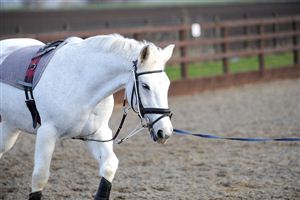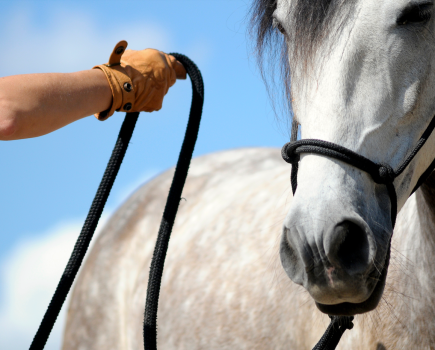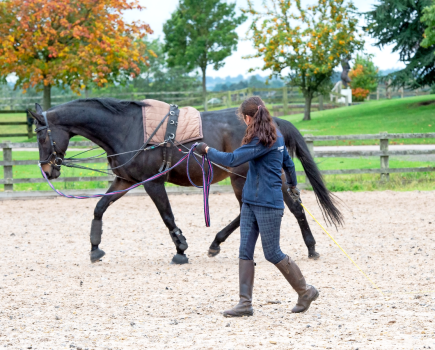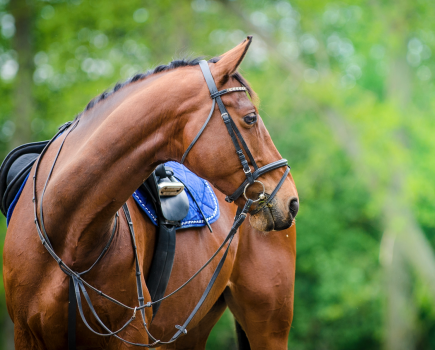By encouraging the neck to be lowered and the nose to be brought in, the back comes up and the quarters engage. “Like the chambon, the de Gogue is good for hollow horses,” says expert Tara Osborn, “but it has the benefit of being used for ridden work, too. Also, as the nose is encouraged to be brought in, it tends to develop a rounder way of going and improves the topline and muscling of the quarters.”

A De Gogue acts upon the poll and the bit, putting pressure on the corners of the mouth when the horse raises his head higher than desired.
What is it?
Similar in look to a chambon, the cords pass through the bit rings instead of clipping to them, and attach either to specially adapted reins or back onto the breast strap that passes between the horse’s forelegs to form a triangular shape.
When should it be used?
For in-hand work, loose schooling, lungeing or ridden work. For non-ridden training it’s used in the triangular shape and is under the direct control of the horse. For ridden work, the de Gogue can be brought into action by the special reins, but should be used alongside reins fitted directly to the bit.
How does it work?
It acts upon the poll and the bit, putting pressure on the corners of the mouth when the horse raises his head higher than desired. Downward pressure is placed on the poll and backwards pressure on the mouth, which releases when the horse brings his head down and nose in.
What is it good for?
- Developing suppleness through the back
- Encouraging a longer, lower frame while being ridden
- Developing muscle across the back and loins – particularly those needed for show jumping
- Strengthening the hindquarters
- Develops looseness in the paces due to greater suppleness in the back
What can go wrong?
The effectiveness will be dramatically reduced if the de Gogue isn’t fitted correctly. “If it’s too tight, it will pull the horse’s neck down and back, making him overbent and unable to work up from the hindquarters into the bridle,” explains Tara. “Too loose and there will be little effect as the horse can maintain a head-up and nose-out way of going. It’s vital the horse is worked forward into the contact otherwise he’ll be put onto the forehand.”








